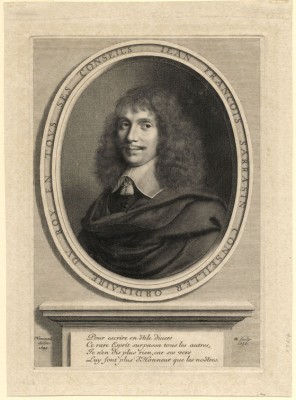ROBERT NANTEUIL
1623 Reims - Paris 1678
Click images to toggle info
-
![]()
ROBERT NANTEUIL
1623 Reims – Paris 1678
Jean François Sarrazin 1656
engraving; 215 x 152 mm (8 7/16 x 5 15/16 inches)
Robert-Dumesnil 220; Petitjean/Wickert 203 first state (of five)PROVENANCE
Ducs d’Arenberg, Brussels and Nordkirchen, Westphalia (Lugt 567)It is unusual for Nanteuil to also give the date of the drawing. Here, he explicitly signs the print as delin[eavit] 1649 et sculp[sit] 1656.
-
![]()
ROBERT NANTEUIL
1623 Reims – Paris 1678
Hardouin de Péréfixe 1662
engraving; 328 x 257 mm (12 15/16 x 10 1/8 inches)
Robert-Dumesnil 211; Petitjean/Wickert 191 second state (of four)WATERMARK
oval ?PROVENANCE
Franz Baumgartner, Vienna (Lugt 975)
Rudolf Peltzer, Cologne (Lugt 2231);
his sale, H.G. Gutekunst, Stuttgart, May 2–8, 1913
Knoedler & Co., New York (their stock no. K 5596)
private collection, USA (acquired during the 1920s and 1930s)
by descent to the grandson of the collector
R.M. Light & Co. (acquired in the late 1980s) -
![]()
ROBERT NANTEUIL
1623 Reims – Paris 1678
Hardouin de Péréfixe 1663
engraving; 363 x 282 mm (14 1/4 x 11 1/8 inches)
Robert-Dumesnil 212; Petitjean/Wickert 192 second state (of three)WATERMARK
arms of Etienne de Meau (cf. Heawood 686)PROVENANCE
Max J. Bonn, London (Lugt 1878)
Knoedler & Co., New York (their stock no. K 2096 MK)
private collection, USA (acquired during the 1920s and 1930s)
by descent to the grandson of the collector
R.M. Light & Co. (acquired in the late 1980s)Hardouin de Beaumont de Péréfixe (1605–1671) was chamberlain of Cardinal Richelieu.




